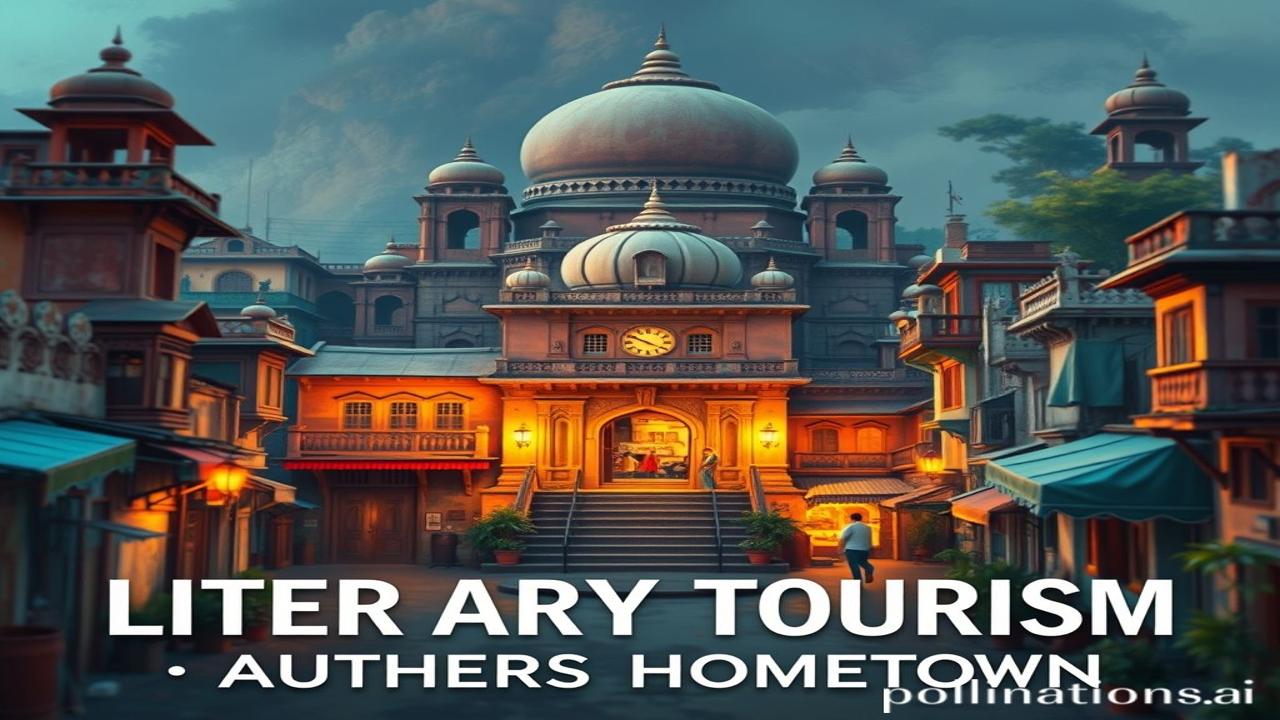Literary Tourism: Authors’ Hometowns – Kitabon ke Safar, Kahaniyon ke Shehar
Kabhi socha hai, kisi kitaab ko padhte waqt, uske har panne mein chhupe alfaaz kahan se aaye honge? Woh writer, jinhone yeh sab likha, unki zindagi kaisi thi? Unke gaon, unke shehar mein kya mahol tha? Literary tourism humein ushi duniya mein le jaata hai – a journey to the heartlands that birthed our favorite stories.
Literary Tourism: Kya Hai Yeh?
Literary tourism, simple shabdon mein, hai authors ke hometowns, ya un jagahon pe ghoomna jahan unhone apni zindagi ka important time bitaya. Yeh sirf sightseeing nahi hai; yeh hai ek tareeka unki soch, unki inspiration ko samajhne ka. Imagine you’re a huge fan of Premchand. Wouldn’t you want to visit Lamhi, the village where he was born? Literary tourism lets you walk in their footsteps, feel the vibes, and truly connect with their work on a deeper level.
Itihas Aur Sanskruti: Ek Jhalak
Literary tourism koi naya concept nahi hai. Long before “tourism” became a buzzword, log tirth yatras karte the – journeys to sacred places, often linked to the lives of saints and poets. Think of Kabir’s Banaras, or Mirabai’s Rajasthan. These weren’t just geographical locations; they were hubs of philosophical and artistic inspiration.
Today, literary tourism is more structured. Author’s homes are preserved as museums, walking tours are organized, and literary festivals celebrate the connection between place and prose. Yeh ek way hai apni literary heritage ko celebrate karne ka.
Zameeni Sach: Logon Ki Kahaniyan
Imagine a young Rabindranath Tagore, running through the fields of Shantiniketan, absorbed by the natural beauty around him. Ya, a mischievous young Sarat Chandra Chattopadhyay, exploring the bustling streets of Bhagalpur, observing the lives of ordinary people. These experiences fueled their creativity, shaping their characters and stories.
Literary tourism allows us to connect with these moments. We can visit Tagore’s Ashram in Shantiniketan, feel the earthy simplicity of the place that inspired his poetry. We can walk the ghats of Banaras, imagining Premchand’s characters navigating the complexities of life.
Dharohar Aur Pehchan: Aaj Ka Bharat
Literary tourism sirf past ki baat nahi hai; it’s directly linked to our present and future. Yeh humein yaad dilata hai ki hamari dharohar kitni rich hai. It promotes understanding and appreciation for different cultures and perspectives.
Think about how Gulzar’s poetry reflects his experiences in Dina, Pakistan, before Partition. By visiting these places, we gain a deeper understanding of the historical events that shaped his writing and, consequently, India itself.
Majedar Tathya Ya Bhram-Bhanjak
Myth: Literary tourism is just for intellectuals and bookworms.
Truth: Anyone who enjoys a good story can appreciate literary tourism. It’s a chance to travel, learn, and experience different cultures through the lens of literature. You don’t need to be a literary critic to enjoy exploring an author’s hometown!
Drishya Aur Bhavnayen: Ek Sensory Experience
Imagine walking through the dusty lanes of Lamhi, the smell of earth and smoke filling your nostrils. The sounds of children playing, the rhythmic clanging of a blacksmith’s hammer, the distant calls of vendors. You see the simple mud houses, the bustling marketplaces, and the vast fields stretching to the horizon. These are the sights, sounds, and smells that shaped Premchand’s world, the world that he brought to life in his stories. You can almost feel the spirit of ‘Godaan’ hovering in the air.
Antim Vichar Ya Uddharan
“Shabdon se banti hai duniya, aur duniya se bante hain shabd.” Literary tourism is a journey into both – the world of words and the world that inspires them. Let’s embark on this adventure together!
